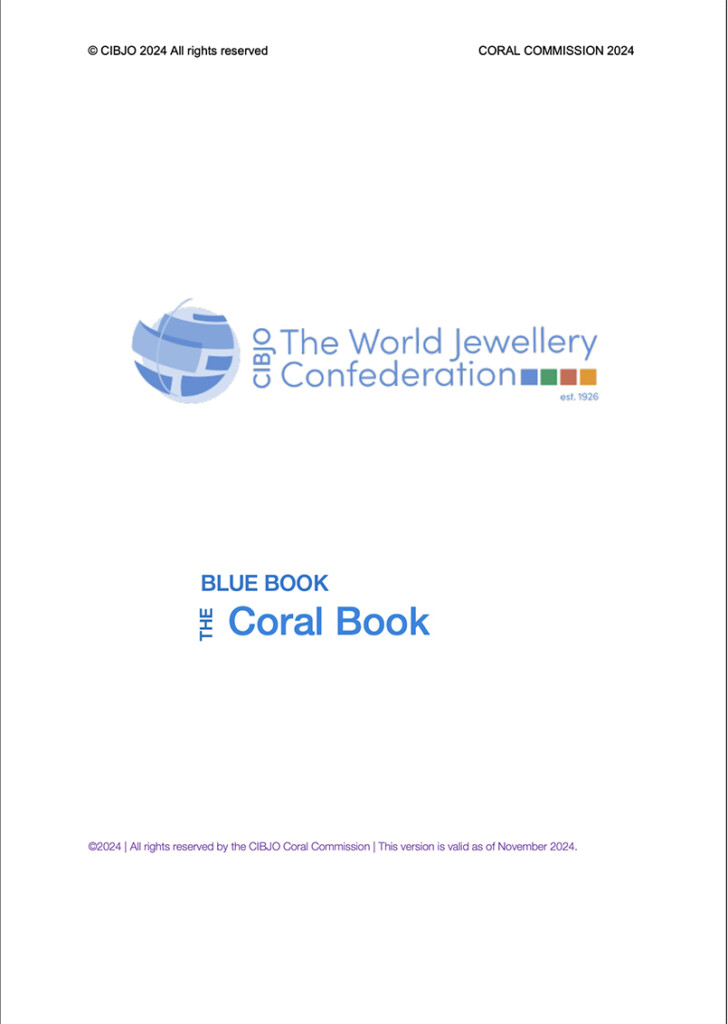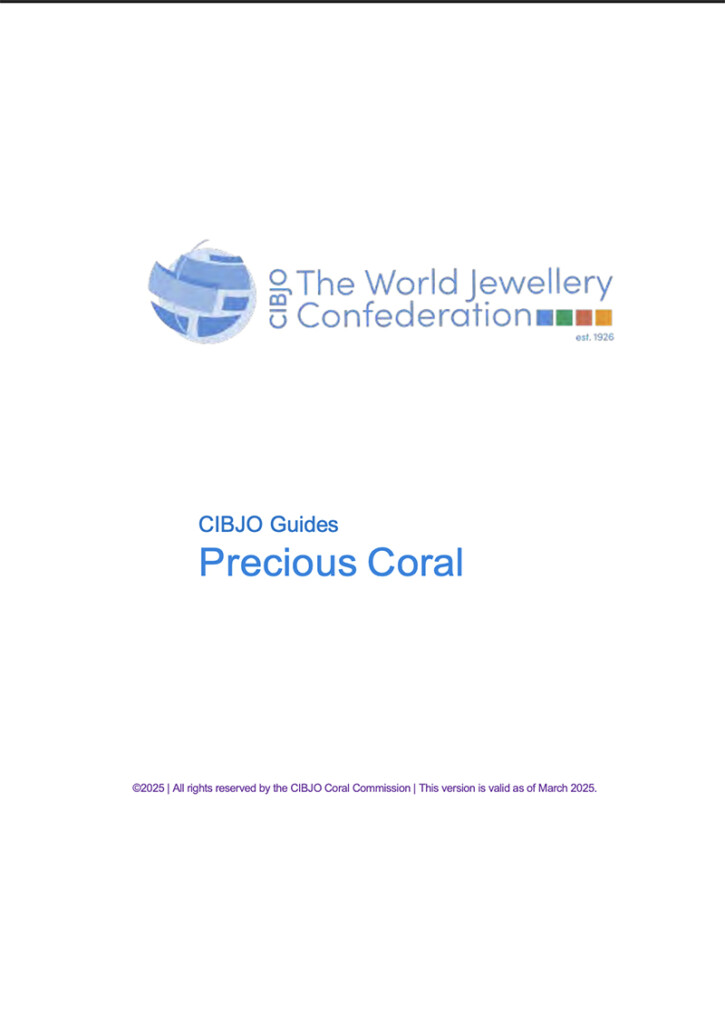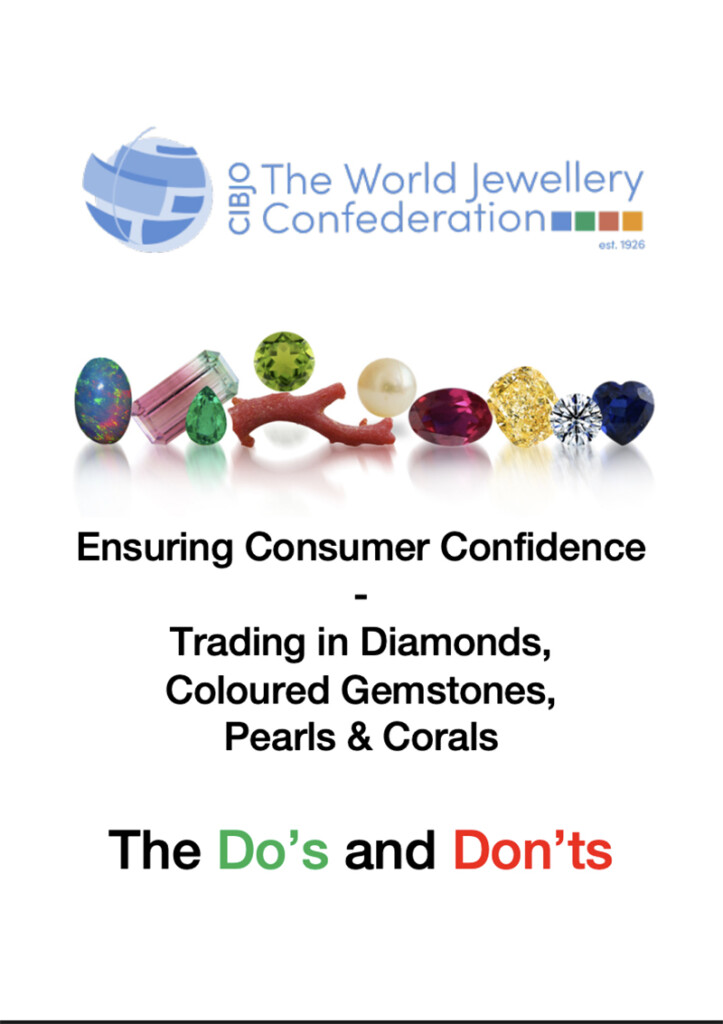SPECIAL REPORT
CORAL
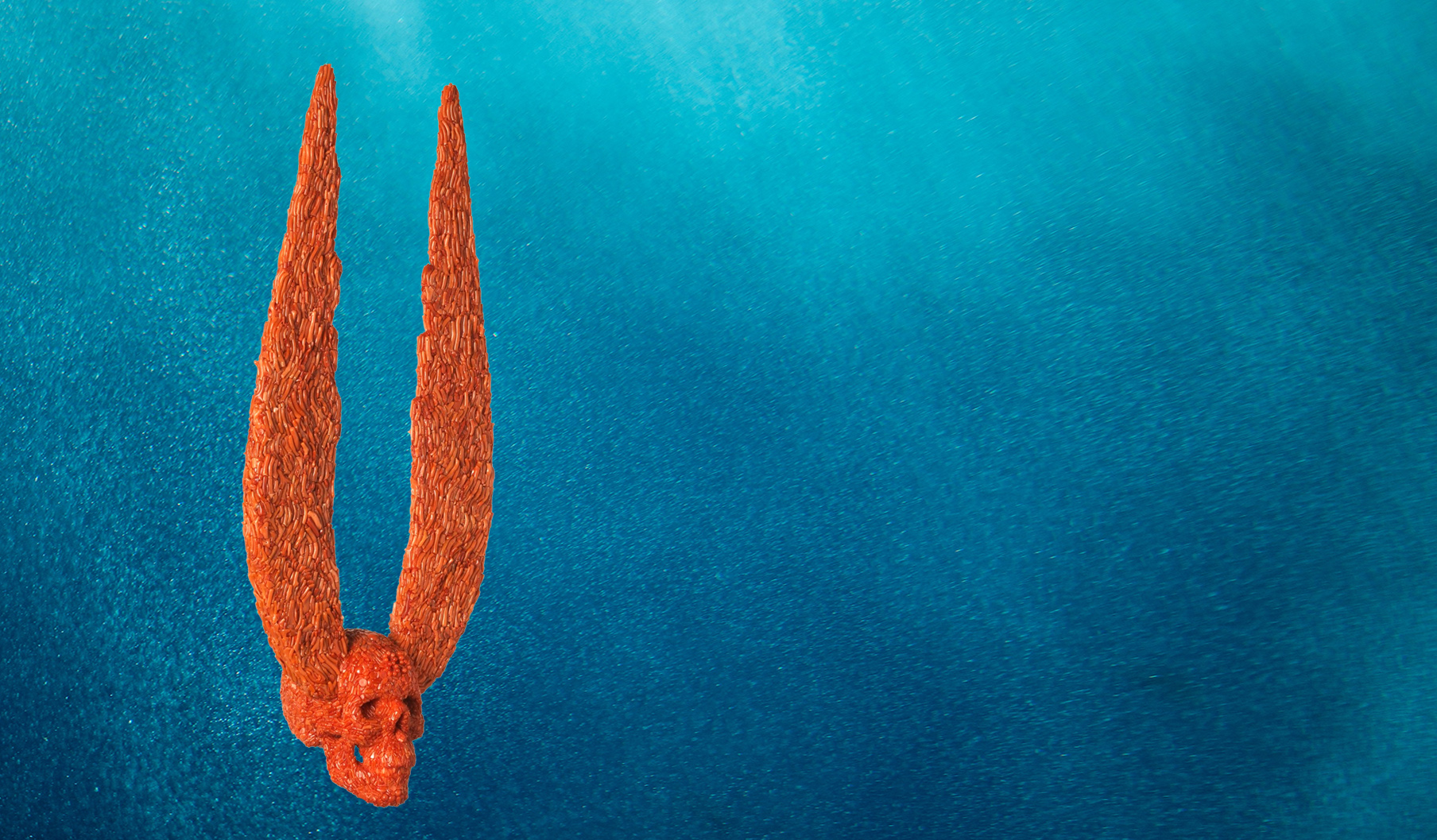
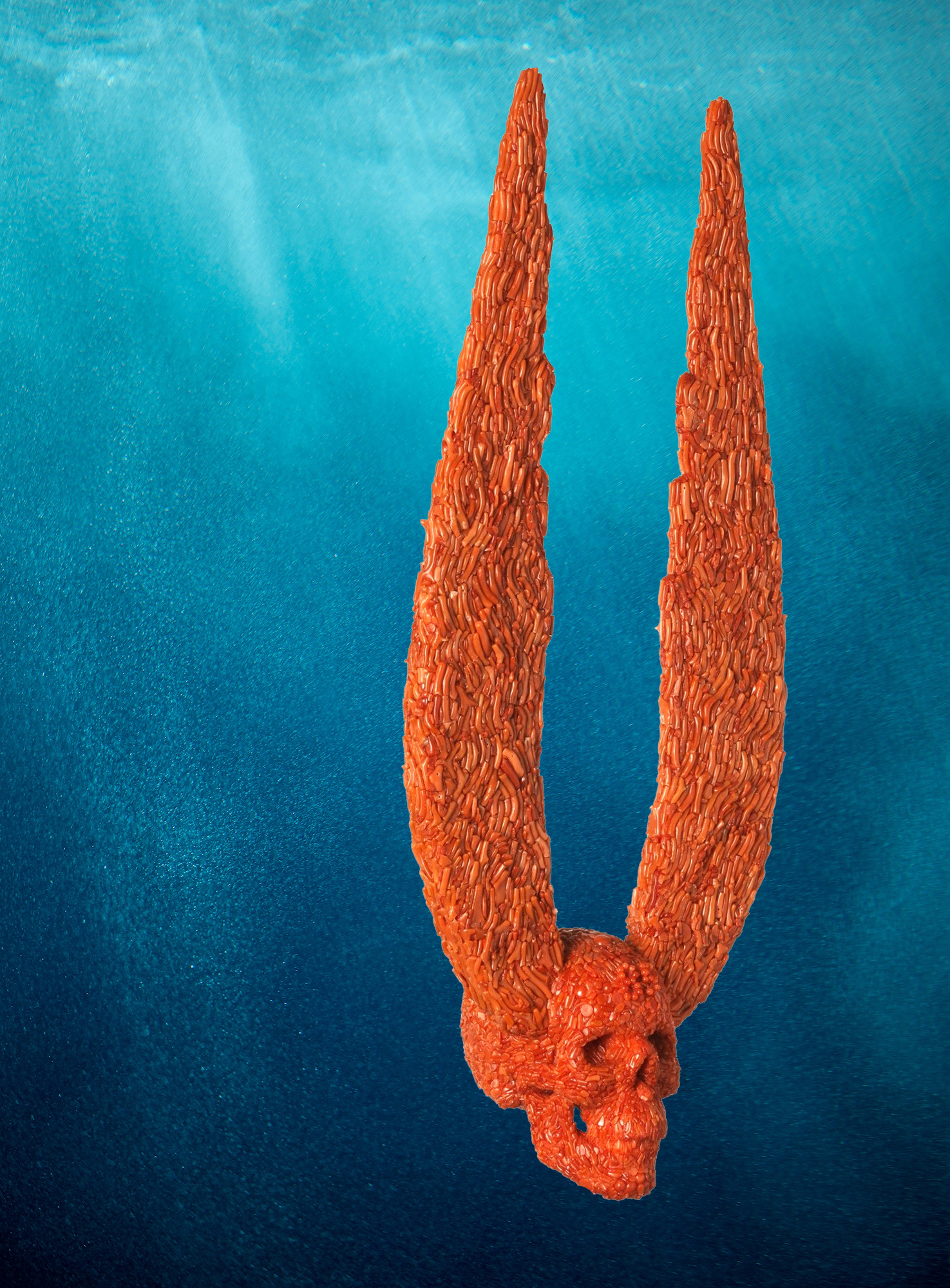
PHOTO CREDIT: The ‘Angel Wing’ oral sculpture by Jan Fabre. Background photo by Janek Valdsalu on Unsplash.
Preserving precious coral’s heritage,
craftsmanship and intergenerational skills

By Enzo Liverino
President
CIBJO Coral Commission

Rui Galopim De Carvalho
Vice President
CIBJO Coral Commission
OCTOBER 16, 2025
The precious coral sector stands at a unique intersection, where ancient tradition intersects with the sustainability challenges of our modern times.
While much of the industry’s recent focus has justifiably centered on responsible environmental stewardship, sustainable harvesting practices, and the differentiation between deep-water precious corals and threatened reef corals, we must also champion the deep cultural footprint and irreplaceable heritage associated with this biogenic gem material. It has a strong craftsmanship heritage and a highly specialized “savoir fair,” which is to say a set of skills and know how.
Precious corals, and particularly the red, pink, and white varieties used in jewellery, have been cherished for millennia, with the predominantly pink and white varieties having been used in the decorative arts for more than a century. They have forged a connection between humans, their coral fishing and manufacturing communities, and the marine environment, which spans thousands of years.
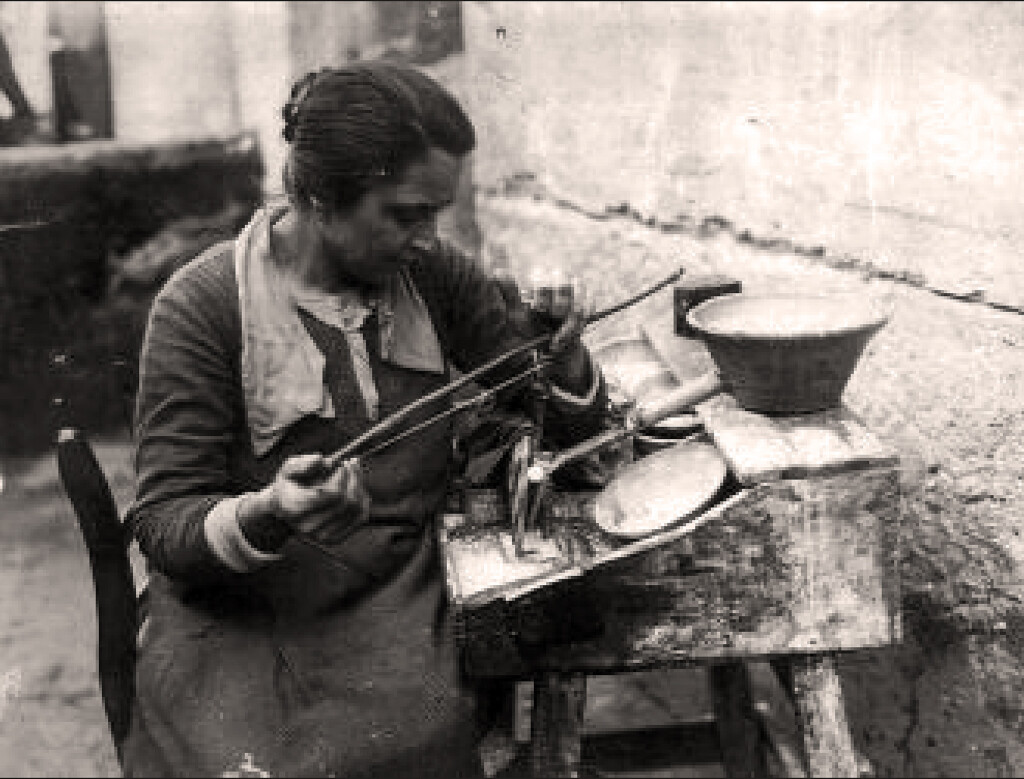
A coral bead driller in Naples, during the early 20th century.
The ancient tradition of crafting and using precious coral
The history of humans using and crafting precious coral extends far into antiquity. Mediterranean red coral (Corallium rubrum) has deep cultural and social roots, and it was the focus of one of the oldest and most significant forms of economic activity carried out in the Mediterranean basin and adjacent Atlantic coastal areas.
Even more recently, precious coral materials fashioned into beads were traced to the 16th and 17th centuries, confirming their continuous use over centuries.
The use of other precious coral species with notably larger branches, specifically in Asia, focusing on local species like Pleurocorallium elatius, Corallium japonicum, and Pleurocorallium konojoi, have been accompanied by an adaptation of fashioning techniques and scaling of artistic objects carved and polished from the local raw matarials. There are interesting late 19th-century carvings made during the Qing Dynasty in China that are a testament to this know how and use of a then-new material in those larges sizes.
The art of coral processing is a key element of this heritage, with a thousand-year history, particularly flourishing in Southen Portugal in the Algarve (Lagos), as well as in today’s Italy, where the tradition is handed down from generation to generation. This enduring practice has allowed coastal communities to benefit economically from a local resource.
The concept of “material culture” encapsulates this intangible heritage linked to the art of coral processing—a skill that enriches the cultural identity of entire communities.
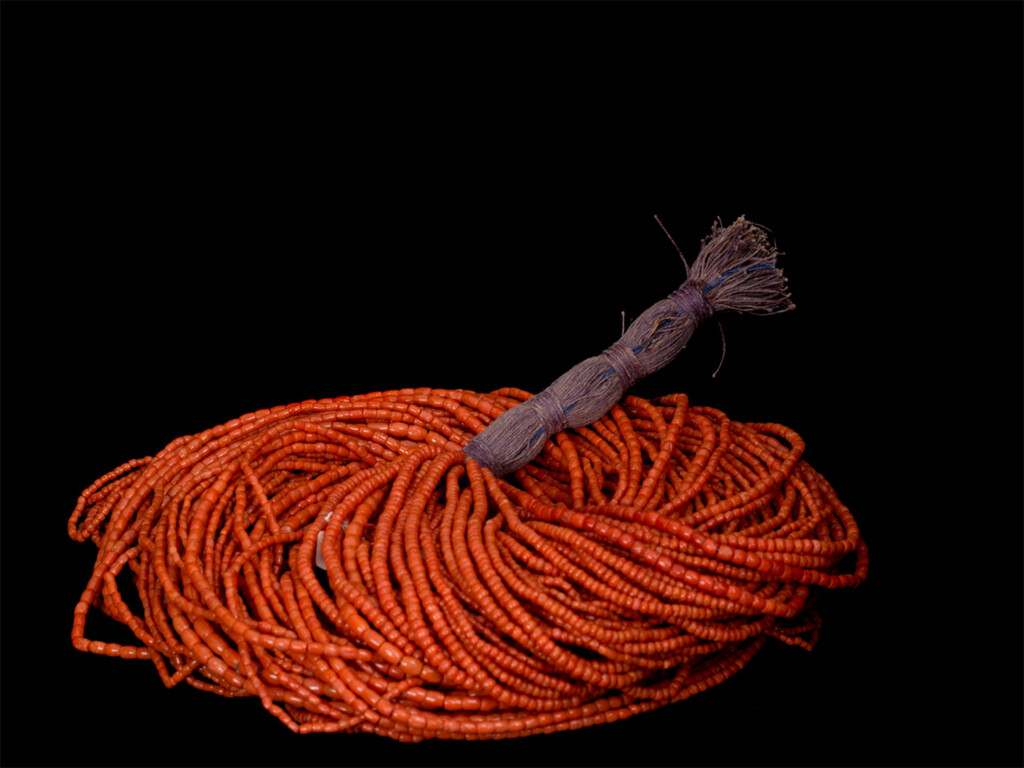
Drilled coral beads such as these have been a feature os equatorial African markets since the 15th century, when Portuguese seafarers traded in them on their way to discovering the sea route from Europe and around continental Africa to India.
The imperative of intergenerational solidarity
As the precious coral industry seeks to ensure environmental and biodiversity sustainability, it must equally focus on social sustainability and the preservation of cultural traditions. Coral manufacturing requires highly specialized skills that take decades to master. Craftspeople possessing them can be found in very specific areas in Italy and parts of Asia.
The sustainability of the industry requires that artisanal skills are not lost. This demands deliberate action.
To ensure that generations’ worth of knowledge is not eroded as older people retiring from the industry without passing their skills and understanding requires intergenerational solidarity.
The transfer of specialised skills from generation to generation is crucial. Nurturing and supporting young and upcoming artisans is fundamental not only to the local economies, but also to maintaining the centuries-old culture of working with coral.
The difficulty of attracting young artisans to work in our industry, especially for high-end jewellery where excellence and detail are critical, has long been a concern. This is even more pronounced in the coral sector, where the number of people able to impart the necessary knowledge and training is limited.
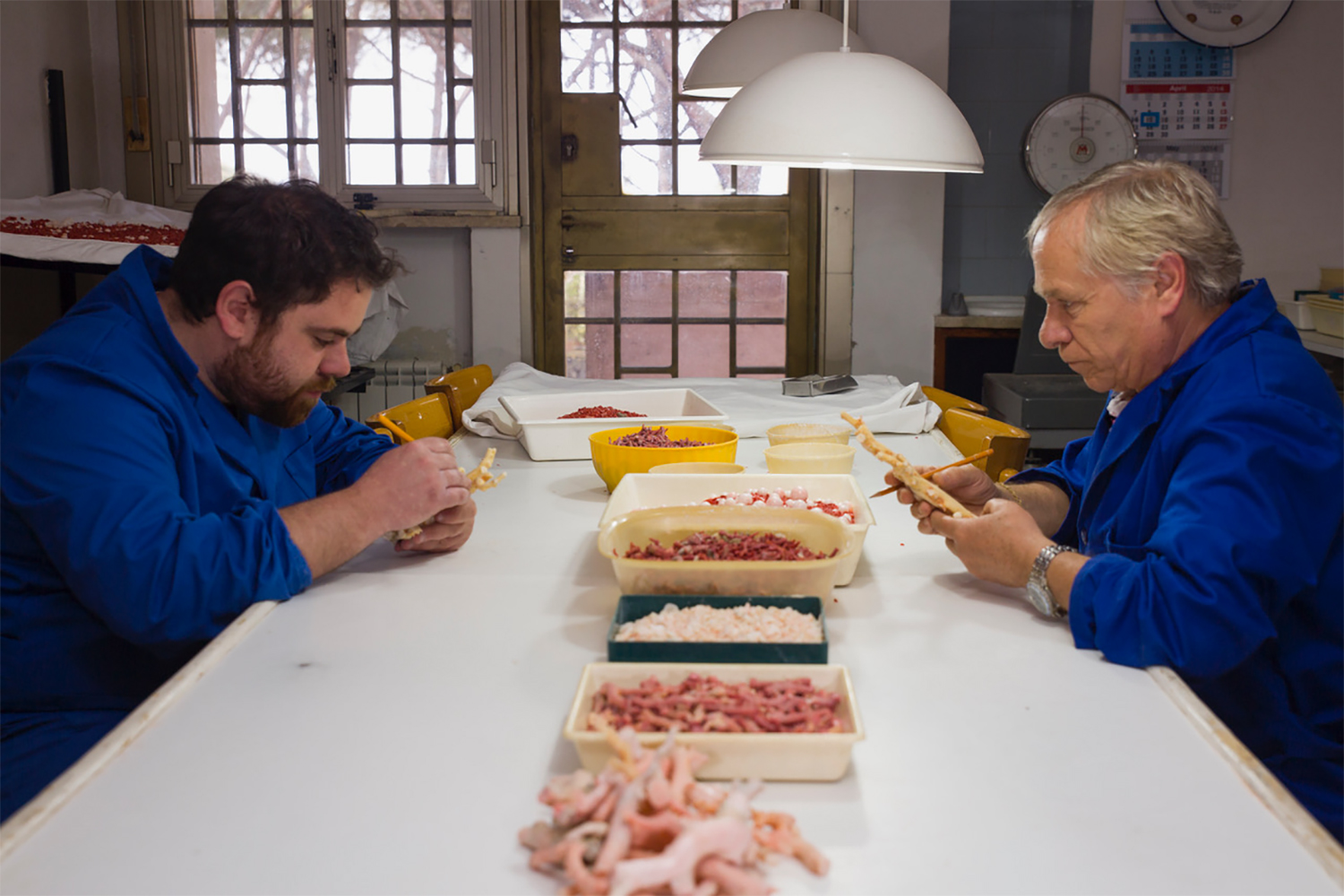
Workers in a modern coral factory in Torre del Greco, the commune south of Naples that is the centre of Italy’s coral industry.
Educational initiatives undertaken by CIBJO
Recent vocational training initiatives promoted by the sector specifically aim to improve the skills of local artisans, and often integrates modern technologies to ensure processing is both efficient and sustainable.
The recently established CIBJO Academy is a most promising development that will become a vehicle for educating all trade stakeholders on CIBJO standards, industry best practices and the relevance of corals. This educational body will give significant exposure to the work of the Coral Commission, including the recently reviewed CIBJO Coral Guide for Customs and the updated versions Coral Blue Book. Furthermore, educational field trips allow industry stakeholders a “hands-on approach” to understanding CIBJO terminology, visually identifying main precious coral varieties, and studying valuing criteria.
The upcoming CIBJO Congress in Paris adds an especially meaningful dimension to this discussion. Paris has long been home to some of the world’s most historically significant jewellery maisons, with a centuries-old tradition of savoir faire in the luxury ecosystem. Many of them have incorporated precious coral into their creations over hundreds of years.
This connection underscores not only coral’s enduring place in jewellery heritage but also its relevance in contemporary high jewellery design. Iconic Paris-based houses such as Van Cleef & Arpels and JAR continue to employ coral in exceptional pieces, ensuring that this biogenic gem remains firmly linked to the pinnacle of artistry and craftsmanship.
The congress setting therefore provides a fitting backdrop to reflect on coral’s cultural legacy while charting a sustainable future for its use.
CIBJO’s Coral Blue Blue, Coral Guide and Do’s and Dont’s guide, which are part of the battery of educational materials developed by the World Jewellery Confederation to raise the levels of expertise in the industry. Each can be downloaded at no cost by clicking on the respective image.



